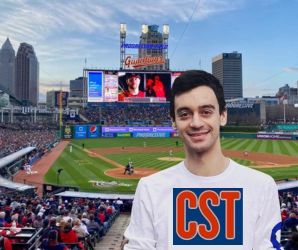I was in California for a Technical Conference being held at Monterrey for the Akron Company that I was President of, an entity of Jones & Ross Engineering, a designer of Tire Building Machines. On my side of matters I was experienced employing Contract Field Engineers at companies such as Pullman Power at the Perry Nuclear Plant and Technicians of all sort at Goodyear and B.F. Goodrich and others in Summit County.
My initial flight was scheduled through San Francisco International Airport with a connecting flight from there to Monterrey, California, which I later learned is a mecca for retired Navy Personnel.
My latter flight was overbooked and since I was early for the Conference, I accepted a “rain check” for a flight anywhere in the U.S. to be used within a year. The new, short flight seated me next to an elderly gentleman with whom I attempted a conversation with. However, he reached into his carry-on bag and retrieved a book. So much conversation I thought for conversation.
However, that short connecting flight introduced me to Navy Cross recipient Captain Joseph Francis Enright, US Navy (ret.). The book he retrieved was an issue of Reader’s Digest Condensed Book Series that featured his story and that of the USS Archerfish, the Balao Class submarine he commanded in WWII. Captain Enright was returning from reunion of its crew in Florida. Although Wikipedia shows him being born in Minot, SD, he told me, as I recall, he was from Ohio.
In November 1944, with 10 officers and 70–71 enlisted men, they departed Pearl Harbor on her fifth war patrol, stopping in Saipan for some quick repairs. Her mission was lifeguard services for B-29 Superfortress Bomber pilots and crews that had crashed in the ocean after bombing raids against Tokyo itself.
On that day no raids were scheduled by the U.S. Army Air force so she could roam at will, giving her carte blanche to roam the waters near Tokyo Bay
That changed on November 28 when Enright received a message from his radar operator and keen-eyed lookouts who had spotted what they thought was a tanker leaving Tokyo Bay, accompanied by three ships and a submarine chaser.
Getting into position they fired six torpedoes. They were set by Enright to run shallow in the event the torpedos ran higher and might capsize it. Four of Archerfish’s torpedoes hit, striking the carrier between the anti-torpedo bulge and the waterline at approximately 0320. The damage was magnified by the fact that Shinano had turned south just minutes before Enright shot his torpedoes, thus exposing its side to Archerfish, a nearly ideal firing situation for a submarine. The Shinano initially continued under way but it lost power around 0600. The crew were unable to contain the flooding due to serious design flaws and inexperience, and the carrier capsized just before 1100.
Immediately afterward Captain Enright ordered the submarine to 400 feet in anticipation of depth charge attacks. For close to an hour they heard death throes of a ship breaking up. They had sunk a Japanese Aircraft Carrier. However, the story doesn’t end there.
After almost two months on patrol they finally returned to Guam only to learn the Office of Naval Intelligence told them they had not sunk a Carrier and wanted to give them credit for a Heavy Cruiser. They didn’t believe the enemy had any carriers in that part of the Sea. However, Enright had enough foresight to have made sketches of the target.
It wasn’t until the end of the war they learned the identity of the biggest aircraft carrier ever built at the time. It had been converted from a Yamato-class battleship into the 72,000-ton supercarrier after the Battle of Midway.
When the sketches were presented to naval authorities they were finally given credit for sinking the 28,000-pound Shinano. Archerfish and her crew received the Presidential Unit Citation and Enright received the Navy Cross for this action. To this day, Shinano is the large warship to be sunk by a submarine.
Sullivan is a military historian and former Councilman who writes from Northfield Village.
Bibliography ‘Shinano’ and Wikipedia
























